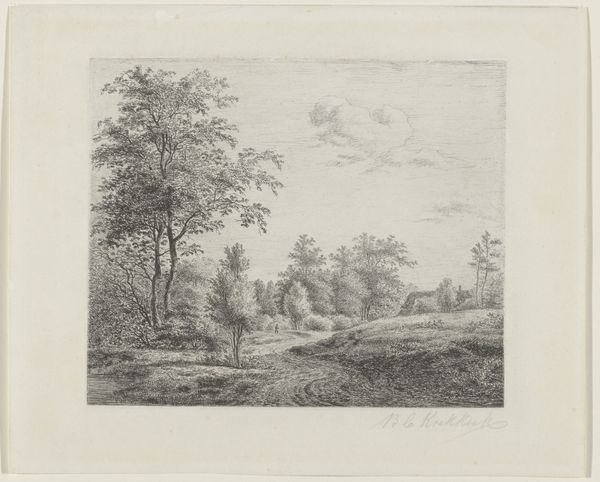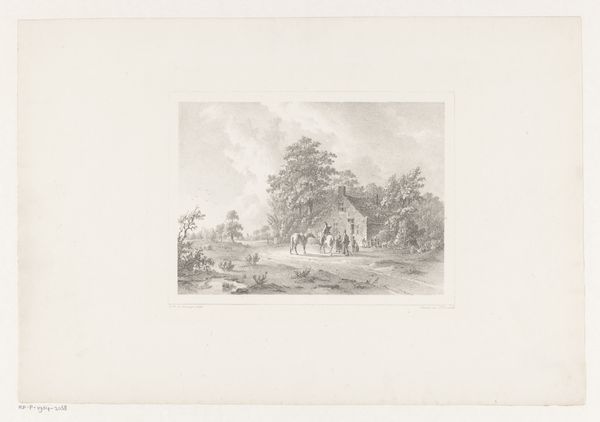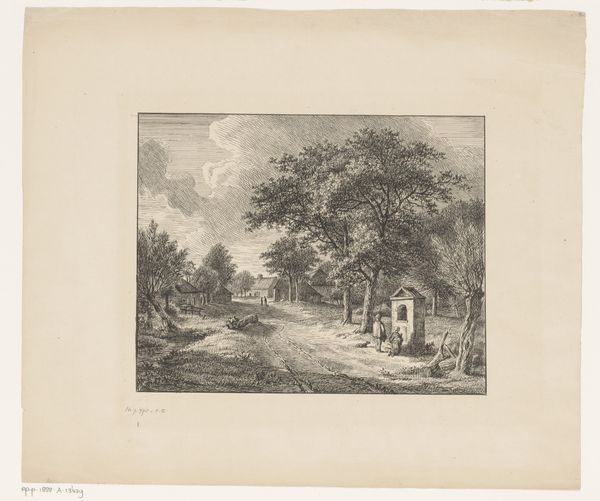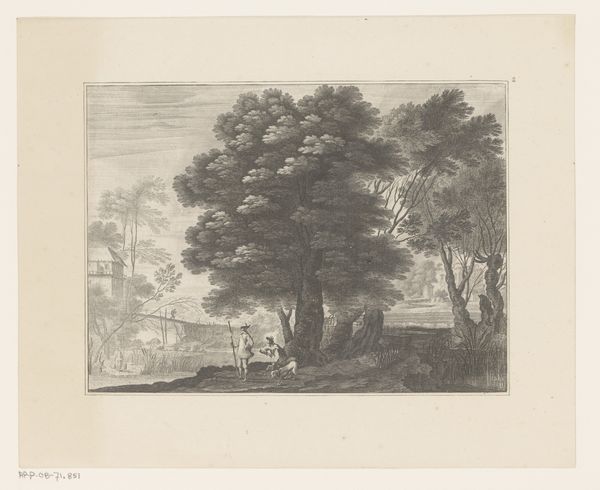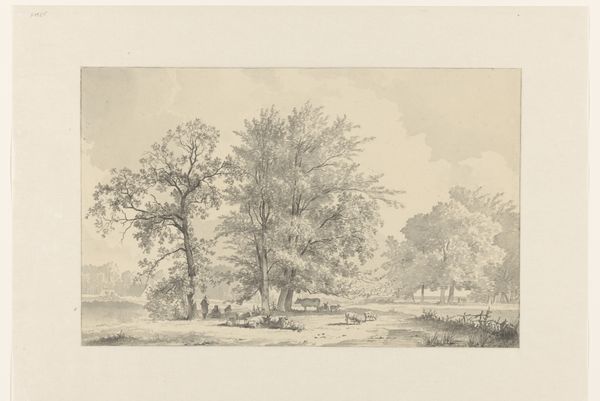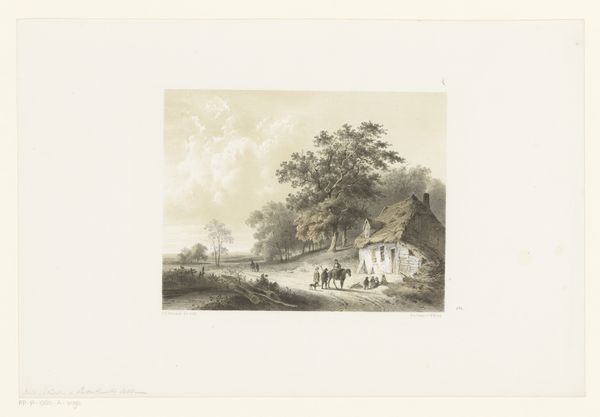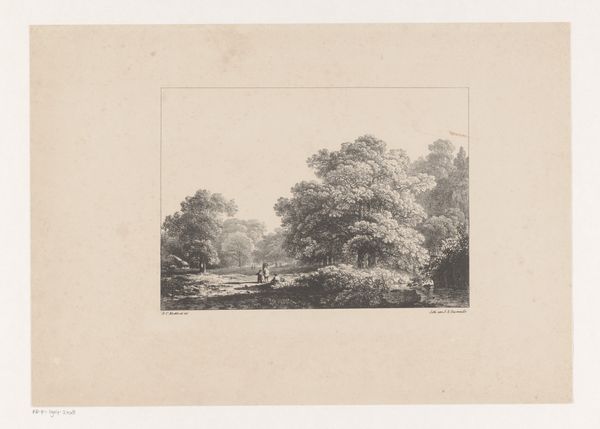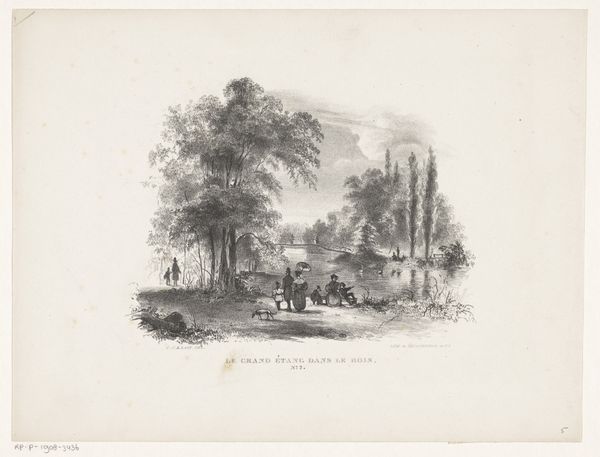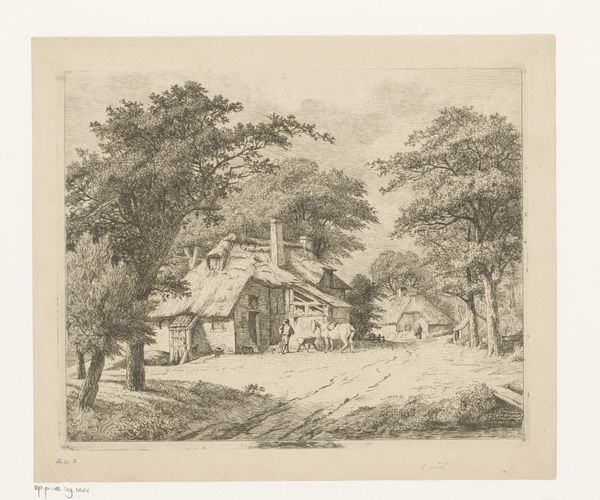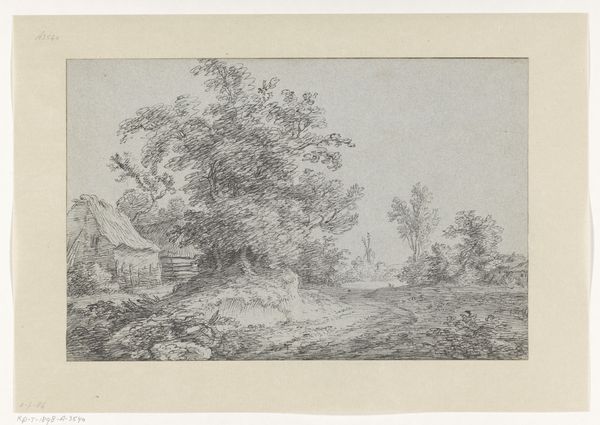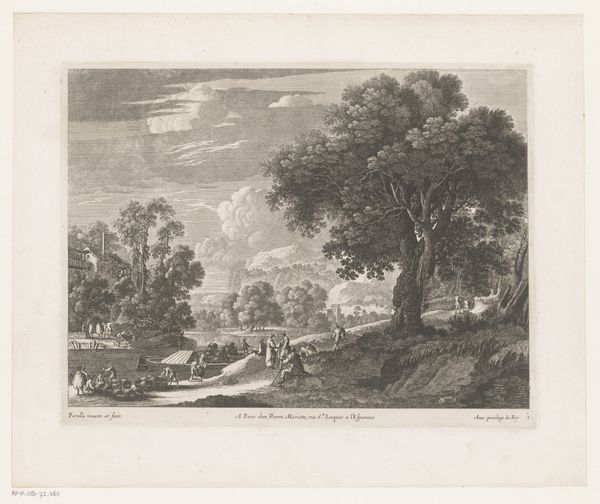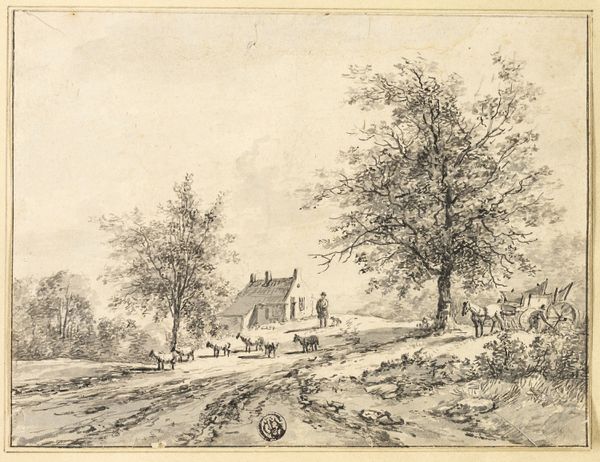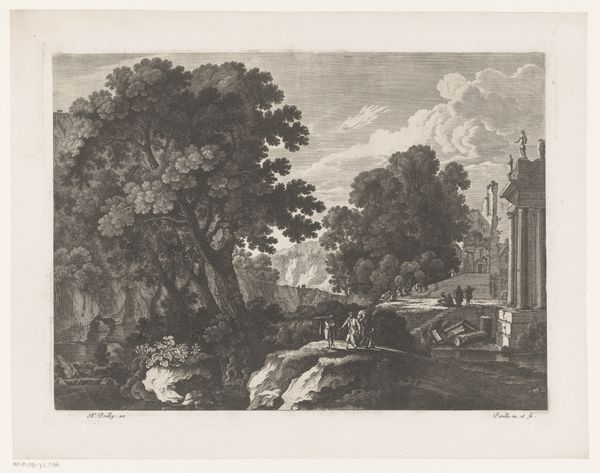
etching
#
etching
#
landscape
#
etching
#
realism
Dimensions: height 264 mm, width 362 mm
Copyright: Rijks Museum: Open Domain
Curator: This etching, "Landschap met slot," which translates to "Landscape with Castle," by François Joseph (II) Pfeiffer, created sometime between 1809 and 1835, offers a meticulously rendered glimpse into a bygone era. What's your initial reaction? Editor: Mmm, peace. An almost fairytale kind of peace. I can almost smell the earthy tones and the fresh air; a serene snapshot, almost photographic in its detail, if that makes sense, despite being a pre-photography piece. It really does bring the scene alive for me, you know? Curator: Indeed. Given the nuances captured, and given its medium is etching, what elements do you think demanded the most labor, technically speaking? For me, the textures are very fascinating, for example in the details of foliage against the architecture... Editor: Good point! The tree. That single, sprawling tree. Look at the individual leaves Pfeiffer managed to render with etching alone! The labour involved is pretty breathtaking. Plus it acts as this focal hug drawing your eye, no, your soul towards the rustic castle... a humble yet monumental presence at the piece's horizon. I think Pfeiffer wanted it like that. He's subtly staging a story in our hearts... or perhaps I'm projecting? Curator: I wouldn't dismiss the emotional effect you’re experiencing. However, given Pfeiffer’s societal standing, perhaps he wasn’t fully aware of his labour power over this medium. Did he reflect on what it means to make art through laborious ways, and on themes about the place itself in relation to what or who it offers protection, both physically or mentally? Editor: See, I get what you're saying, looking at labour through production, but it kind of diminishes it for me. I’m struck more by the vulnerability of such dedication and care within each tiny mark, within the labor and the care, the tenderness of craft itself. Isn't the skill here equally deserving of wonder? Maybe I’m being a romantic here, I accept. Curator: Not at all. You remind me that behind production, and labor division in an era, we're also observing intimacy; that each person relates to a work according to his or her subjective needs. Ultimately, etching becomes a means to mediate the landscape as subject. Editor: Exactly! Thank you. Plus, how else would our modern eyes see this moment locked away between those lines from an unknown past, you know? We are privileged.
Comments
No comments
Be the first to comment and join the conversation on the ultimate creative platform.
